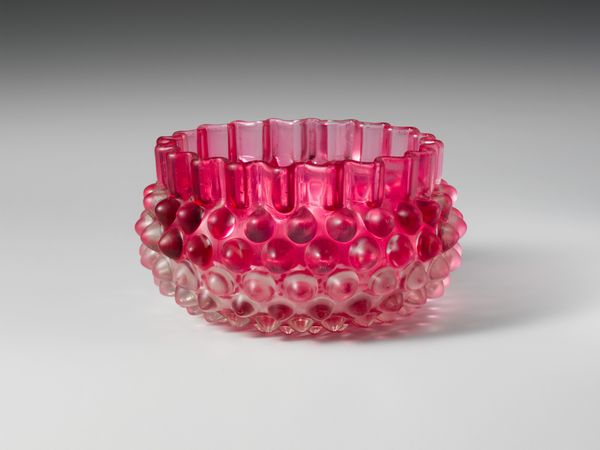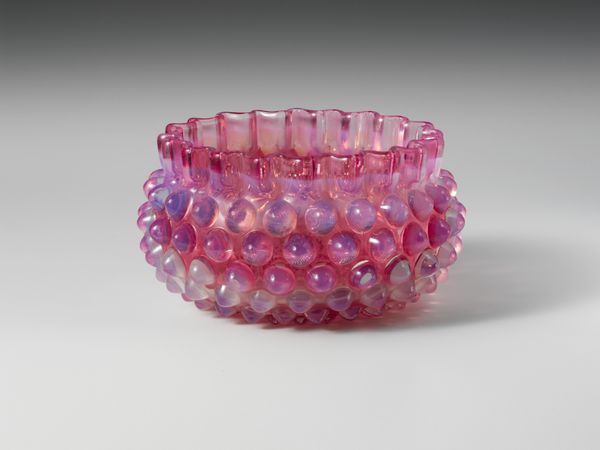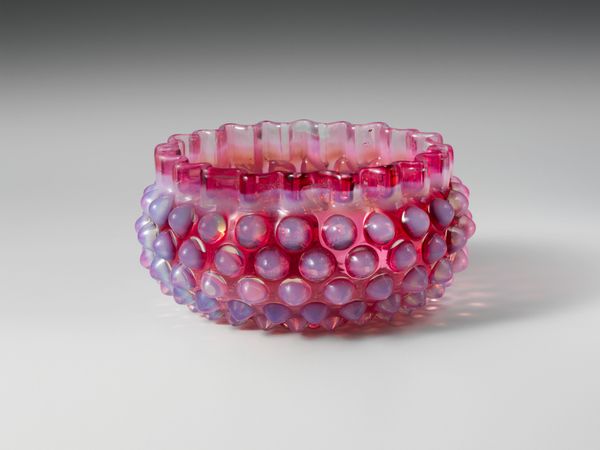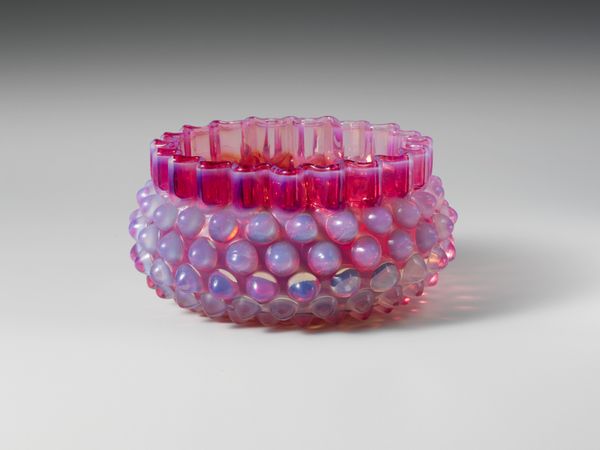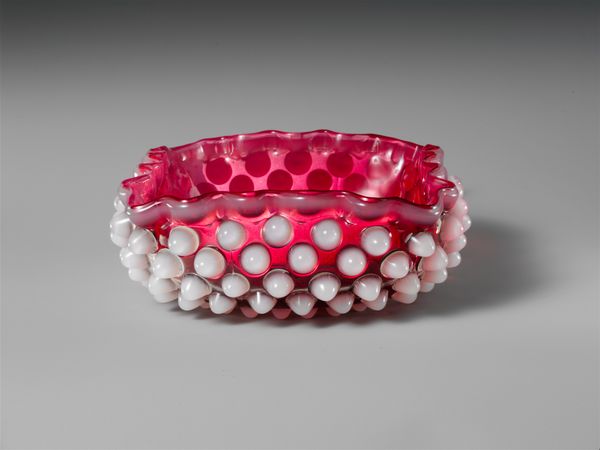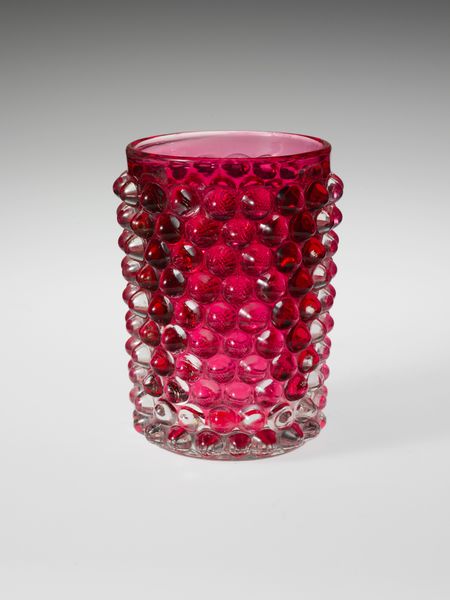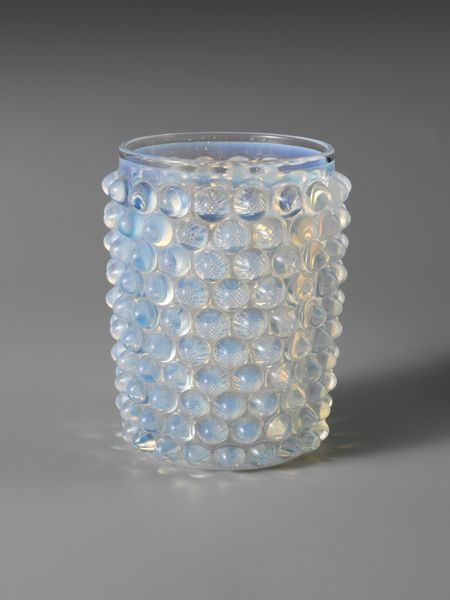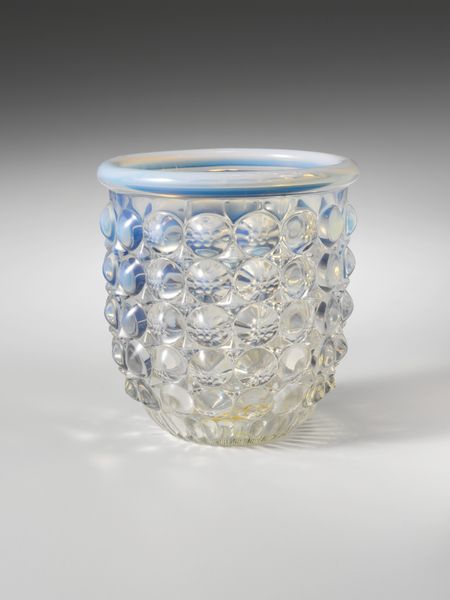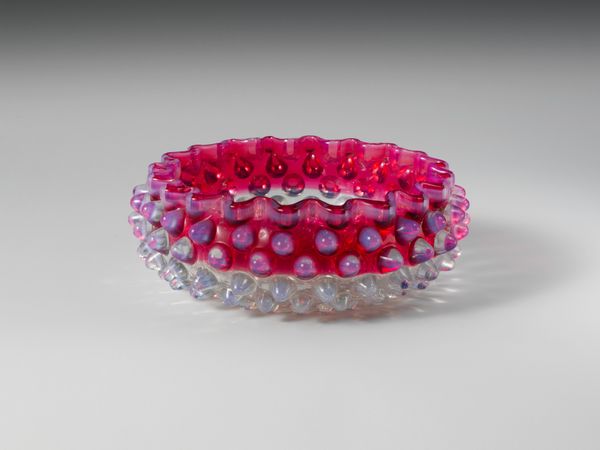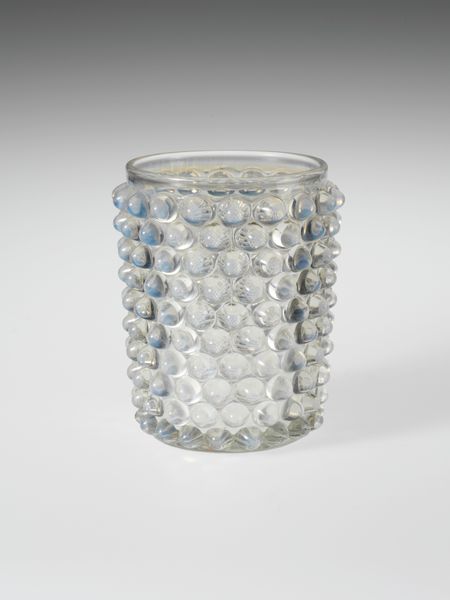
glass
#
art-nouveau
#
glass
#
decorative-art
Dimensions: H. 2 3/4 in. (7 cm); Diam. 5 in. (12.7 cm)
Copyright: Public Domain
Editor: We're looking at a "Hobnail Finger Bowl," made of glass by Hobbs, Brockunier and Company sometime between 1887 and 1896. I must say, it’s much smaller than I expected. It also appears extremely tactile. What are your impressions of it? Curator: Ah, the ubiquitous finger bowl, such a strange object from another time. Do you know that each sphere, each 'hobnail', on the surface demanded individual precision from the glassmaker? Look at the color – a delicate blush – so often overlooked, yet integral. Tell me, does that repeated texture remind you of anything? Editor: Hmm, the texture… It's kind of organic but also strangely uniform. Like bubble wrap meets coral. Curator: Exactly! Now think of Art Nouveau, its love of nature and handcrafted excellence. But, in an odd twist, these pieces were mass produced – each still unique because of the subtle variations of the craftsperson’s hand. Can you feel that tension? Editor: I think so! The individual imperfections give the whole thing character and keeps it from feeling *too* machine-made. Were these common items at the time? Curator: Utterly common, which elevates this particular bowl for me. Once destined to sit inconspicuously, now it commands attention in a museum. Do you think that knowing the intended function changes our viewing experience? Editor: Absolutely! Seeing it in a museum makes me appreciate the craft more, but I also miss the original everyday context. Curator: That's the paradox of art, isn't it? Elevated, revered, yet sometimes distanced from its very soul.
Comments
No comments
Be the first to comment and join the conversation on the ultimate creative platform.
